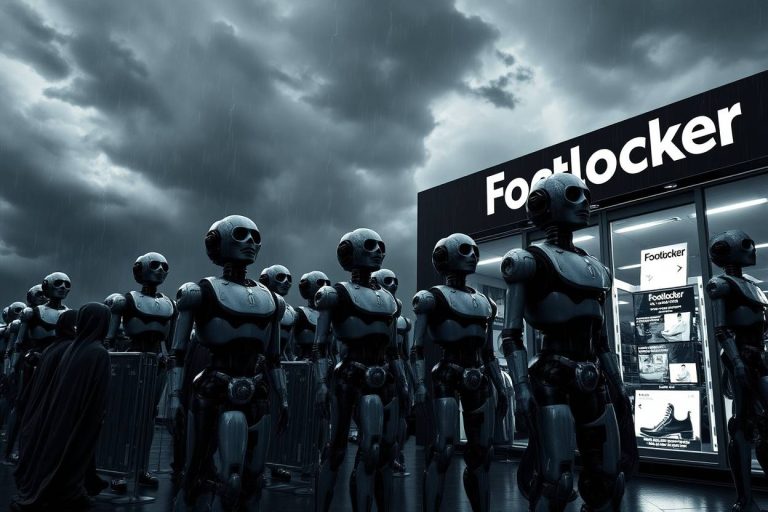Goal-Based Agents: Core Mechanisms and Applications

A Goal-Based Agent is an autonomous system distinguished by its ability to plan and execute a sequence of actions to achieve a specific, predefined objective. This capacity for proactive, goal-oriented behavior serves as the foundation for modern process automation, a discipline from which McKinsey reports 41% of companies are already extracting measurable cost savings.
Unlike simpler agents that only react to their immediate surroundings, a Goal-Based AI Agent considers the future consequences of its actions.
What are goal-based agents?
A Goal-Based Agent is a type of AI Agent that is designed to achieve a specific objective. It uses internal models of the world to consider the future consequences of its actions, allowing it to formulate a plan and adapt it as necessary to ensure the goal is reached.
This analysis will detail the core mechanisms that enable this planning capability, explore its most effective applications, and clarify its position within the broader hierarchy of AI Agents and Intelligent autonomous systems.
What is the core capability of a goal-based agent?
The defining characteristic of a goal-based agent is its capacity for planning. It moves beyond the simple “perceive-act” cycle by incorporating a “planning” step, which allows it to create a sequence of actions designed to transition the world from its current state to a desired goal state.
How does a goal-based agent actually work?
The agent functions through a “Perceive-Plan-Act” cycle, a significant advancement over simpler agent types:
- Perceive: The agent uses its sensors to understand the current state of its environment.
- Plan: This is the critical step. The agent uses search and planning algorithms powered by AI to explore different possible sequences of actions. It considers the question, “What will be the result if I perform action A, followed by action B?” to find a path that leads to its goal.
- Act: Once a valid plan is formulated, the agent uses its actuators to execute the sequence of actions in the real world.
This planning capability is what allows the agent to handle multi-step tasks and navigate complex environments.
Where Are Goal-Based Agents Used in Business?
Goal-Based Agents are the backbone of true workflow automation. They are deployed in any scenario where a multi-step process needs to be completed autonomously and reliably.
How do goal-based AI agents power logistics and supply chain automation?
Logistics is a prime domain for goal-based agents due to the need for dynamic planning.
- Route Planning: A delivery agent is given the goal: “Ensure this package arrives at the destination by 5 PM.” It will plan the optimal route. If it receives new data about a traffic jam, it discards the original plan and formulates a new one to still achieve its objective.
- Inventory Management: An agent in a warehouse can be assigned the goal: “Maintain a minimum stock level of 100 units for product #XYZ.” When its sensors detect that the stock level has fallen to 99, it will autonomously execute a plan to generate a purchase order, send it to the supplier, and update the inventory status to “on order.”
What are common examples in personal and business productivity?
- Automated Travel Booking: An agent with the goal “Book the cheapest round-trip flight to Denver for the conference next month” will execute a plan: search multiple airline APIs, compare prices and layovers, select the one that meets the “cheapest” criteria, and complete the booking transaction.
- Automated Meeting Scheduling: A goal-based agent can be tasked with: “Schedule a 30-minute meeting with Jane, Tom, and Maria for next week.” It will access all three calendars, identify a mutually available time slot, send the calendar invitation, and book a conference room.
How are they used in robotics and navigation?
- Autonomous Warehouse Robots: A robot in an Amazon fulfillment center is given the goal: “Retrieve item #A57 from aisle 7, bin 3B.” It will plan the most direct physical path through the warehouse, navigate around other robots and human workers, use its sensors to identify the correct item, and transport it to the packing station.
- Mars Rover Navigation: NASA’s rovers use sophisticated goal-based agents to achieve scientific objectives. Given the goal “Analyze the rock formation at Target Point C,” the rover’s planning algorithms will plot a safe path across the Martian terrain, navigating around craters and other obstacles to reach its destination.
What Is the Primary Advantage of a Goal-Based Agent?
The core advantage of a goal-based agent is its flexibility and resilience in achieving an objective.
Why is the ability to plan so important for business automation?
- It enables the automation of entire processes, not just single tasks. A simpler agent can perform one action; a goal-based agent can orchestrate a dozen actions in sequence to complete a workflow.
- It provides resilience. When an unexpected obstacle arises, a simple script fails. A goal-based agent can adapt by creating a new plan, ensuring the business process does not come to a halt.
What is the direct business value of this capability?
- Increased Efficiency: Goal-based agents automate complex, multi-step workflows that would otherwise require significant manual effort and coordination between different teams.
- Enhanced Reliability: They ensure that business processes are completed consistently and correctly according to predefined goals, reducing the risk of human error.
What Are the Critical Limitations of Goal-Based Agents?
While powerful, a goal-based agent is not the most advanced type of agent. Its primary limitation is its lack of consideration for the quality of the outcome.
Why is “achieving the goal” not always the same as achieving the “best” outcome?
- No Efficiency Consideration: A goal-based agent treats all successful paths as equal. It will find a plan that works, but it won’t necessarily find the most efficient one.
- Business Implication: It might book a flight that meets the goal of being “under $500,” but it will not distinguish between a non-stop flight and one with two layovers if both meet the price criteria. It does not weigh these trade-offs.
What are the technical challenges in building a goal-based agent?
- Search Complexity: For complex goals with many possible actions, the “search space” of all possible plans can become enormous. This makes the planning process computationally expensive and can lead to slow decision-making if not properly managed.
- Accurate World Model: The agent’s ability to plan depends on an accurate internal model of how its actions will change the world. An inaccurate model will lead to flawed plans that fail upon execution.
How Do Goal-Based Agents Compare to Other Agent Types?

Understanding where goal-based agents fit in the hierarchy of agent types is key to selecting the right technology.
What is the key difference between a goal-based agent and a model-based agent?
The defining difference is proactivity versus reactivity.
- A model-based agent reacts intelligently to the present moment. It is ideal for tasks like holding a conversation.
- A goal-based agent plans proactively for a future state. It is designed to execute workflows. For example, a model-based agent can talk to you about a problem, but a goal-based agent can execute the multi-step plan to solve the problem.
What is the main difference between a goal-based agent and a utility-based agent?
The main difference is success versus quality.
- A goal-based agent seeks any outcome that satisfies the goal.
- A utility-based agent seeks the best possible outcome by maximizing a “utility” function (e.g., profit, speed, customer satisfaction). For example, a goal-based agent will find a cheap flight, but a utility-based agent will find the flight that offers the best balance of price and convenience.
What Are the Common Misconceptions About Goal-Based AI Agents?
Myth #1: Any AI that completes a task is a goal-based agent.
The Reality: This is incorrect. A simple automation script can complete a task, but it cannot plan or adapt. The defining characteristic of a goal-based agent is its ability to formulate a new plan when its initial path is blocked by an unforeseen obstacle.
Myth #2: They are the most intelligent type of AI agent.
The Reality: While highly capable and the foundation of most business process automation, they are surpassed in intelligence by utility-based agents (which make better, more efficient decisions) and learning agents (which can improve themselves over time).
When Should Your Business Choose a Goal-Based Agent?
A Goal-Based AI Agent is the right choice when you need to automate a complete business process from start to finish.
What is the ideal use case for goal-based AI agents?
You should choose a goal-based agent under these conditions:
- When you need to automate a multi-step business process or workflow.
- When the environment is dynamic, and the agent must be able to adapt to unexpected obstacles.
- When achieving a specific, binary outcome (e.g., “order fulfilled” or “meeting scheduled”) is the primary measure of success.
When should you choose a more advanced agent?
You should invest in a more advanced agent type if your business needs require either of the following:
- The agent must not just complete the task, but complete it in the most cost-effective, profitable, or efficient way possible, which requires a Utility-Based Agent.
- The agent must improve its own performance over time by learning from its results, which requires a Learning Agent.
Ultimately, Goal-Based AI Agents are the pivotal technology for moving beyond simple task automation to true, end-to-end process automation. They provide the flexibility and resilience required to handle the complexity of real-world business operations, making them an essential component of any modern automation strategy.
Frequently Asked Questions
What’s the difference between a goal-based and a model-based agent?
A goal-based agent plans future actions to achieve an objective. A model-based agent uses memory to react to the current situation. Goal-based agents execute workflows, while model-based agents are best for conversations.
How are goal-based and utility-based agents different?
A goal-based agent finds any solution that achieves its goal. A utility-based agent finds the best possible solution by optimizing for a specific metric, such as cost, speed, or efficiency.
Can a goal-based agent learn from its mistakes?
No, a standard goal-based agent does not learn or improve itself. It can create a new plan when it faces an obstacle, but it does not autonomously update its own planning logic. That capability requires a more advanced Learning Agent.
What is the biggest challenge of a goal-based agent?
The biggest challenge is ensuring its world model is accurate. The agent’s ability to plan successfully depends on a correct understanding of its environment and the consequences of its actions. A flawed model will result in failed plans.
What’s a good example of a goal-based agent?
A GPS navigation app like Google Maps is a perfect analogy for a goal-based agent.
- Goal: You enter a destination address.
- Plan: The app calculates a specific route with a sequence of turns.
- Adaptation: If you hit traffic or miss a turn, it automatically creates a new plan to reach the same goal.




